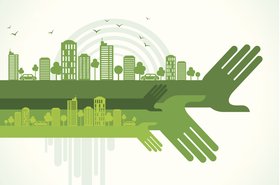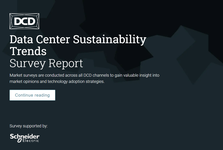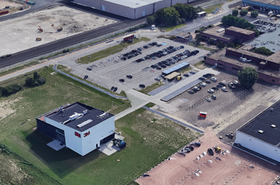A global energy price rise that risks making critical industries unviable is probably most people’s definition of a crisis.
Those running energy intensive operations such as data centers are only too aware that they don’t dictate energy prices. But it is worth asking if this hopefully short-term crisis, combined with long term sustainability challenges, might be the catalyst for the industry to begin to take demand response (DR) opportunities more seriously.
To date much of the data center sector has declared itself unready to consider demand response– otherwise called demand side response (DSR). There has often been a refusal to engage because prevailing attitudes are that it is too much trouble.
Perhaps attitudes may change now that individuals and associations representing a wide range of energy intensive industries such as glass and steelmaking are on TV news programmes warning governments that high energy costs could bankrupt them.
It is clear that even without energy price volatility there exists a strong case for using data center onsite generation and battery storage to create a symbiotic relationship between data centers and utilities. One where both groups benefit by reducing their carbon footprints and gain mutual operational and financial rewards.
Turn and face the change…
Almost everything in global utility energy supply is changing. The fuel mix, load curtailment, frequency response, BESS (battery energy storage systems), VRE (variable renewable energy sources) all are being adopted amid rapid phasing out of dependence on fossil fuels.
But the challenge is that as the energy market transitions by transforming its infrastructure, the electricity grid must maintain a nominal voltage and frequency within specific limits.
The challenge for utilities is that supply and demand are always balanced irrespective of variations in load conditions, generation status and distribution system faults.
To achieve balance, utilities are becoming dependent on third-party embedded generation and energy storage companies as consumer demand and grid capacity fluctuate. An equilibrium is essential to ensure consumer voltage and frequency stays within mandatory operating parameters.
Hence demand response – DR - means opportunities for sites with embedded generation and storage capacity. Demand response, essentially, makes some of that capacity available to help out the grid when necessary.
What is DR and why should you care?
DR is “the adjustment in demand relative to grid generating capacity., designed to address supply and demand imbalance, high wholesale electricity prices and assist with grid reliability.” - according to a new whitepaper from the i3 Solutions Group and EYP MCF GHG Abatement Group, which defines DR service categories including load curtailment, load shifting, short term operating reserve (STOR) and load reduction, frequency response; energy arbitrage; and time variant pricing.
For data centers DR is a complex undertaking. Suitability will be dictated by parameters that range from geography to grid maturity and existing energy mixes. For example, much of the embedded power generation capacity in data centers is diesel generator based. From an emissions perspective, the willingness of grid operators to use this generating capacity will vary as different territories have different definitions of relative fuel cleanliness. This is in turn based upon their access to and historic and current reliance on different fossil fuels. Wind, solar and tidal are cleanest, gas is cleaner than coal etc.
In GHG abatement terms for island operating of generators, the impact on GHG depends on the prevailing grid emission factor (GEF) at the time. Depending on how much GHG the grid is producing, it can save emissions if local generators are used for a period.
If for example, we assume a 50MW facility in China has natural gas generators as its emergency power source. The gas generator emission factor is approximately 486g CO2e/kWh, compared to the national average combined margin grid emission factor of 852g CO2e/kWh. For the purposes of this example, we will assume 852g CO2e/kWh is the prevailing GEF when the generators are operating. With the standby generators running in island mode for 10 hours, this results in 18,300kg CO2e saving.
Marginal emissions reduction must also be considered. Marginal emissions occur when the utility brings a different type of generating plant on the grid such as wind or photovoltaics. What happens when demand outstrips capacity even by 1MW and the only current alternative is to start up a coal fired power station?
In the industry we all know that there exists much over-provisioned power capacity, storage and distribution infrastructure within the world’s existing data centers. There is more to come as new data center capacity comes online.
Crisis, what crisis?
Demand response is an evolving market that will attract new participants.
Data centers represent a significant and increasing load on the grid. Given the sustainability imperatives and the obvious desire to improve margins, especially margins that are negatively impacted by rising energy costs, it seems logical that the data center industry will increasingly participate in DR programs.
The reality is that when grid operators wake up to the data center industry’s existing power capacity that could be integrated for feeding power into the system, it could change everything.
But that can only happen if the data center industry itself is also open to the opportunity.
For more, read: Demand Response Opportunities for Data center Embedded Generation and Energy Storage Systems, the fourth whitepaper from i3 Solutions Group and EYP MCF GHG Abatement Group.





